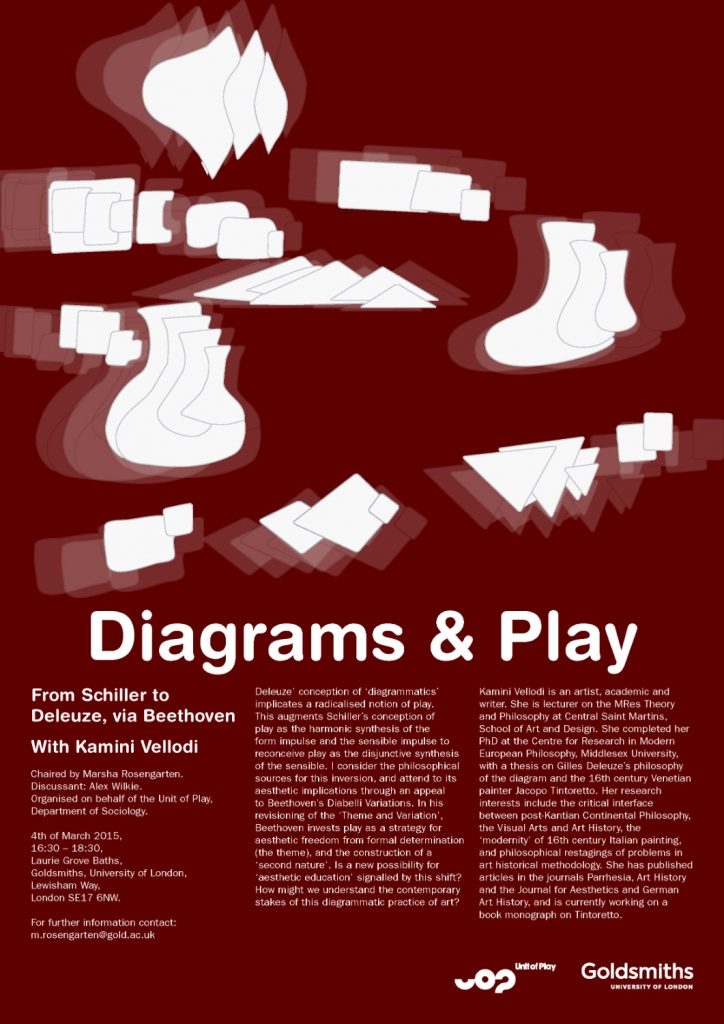
Discussant: Alex Wilkie
Chair: Marsha Rosengarten
Deleuze’s conception of ‘diagrammatics’ implicates a radicalised notion of play. This augments Schiller’s conception of play as the harmonic synthesis of the form impulse and the sensible impulse to reconceive play as the disjunctive synthesis of the sensible. I consider the philosophical sources for this inversion, and attend to its aesthetic implications through an appeal to Beethoven’s Diabelli Variations. In his revisioning of the ‘Theme and Variation’, Beethoven invests play as a strategy for aesthetic freedom from formal determination (the theme), and the construction of a ‘second nature’. Is a new possibility for ‘aesthetic education’ signalled by this shift? How might we understand the contemporary stakes of this diagrammatic practice of art?
Kamini Vellodi is an artist, academic and writer. She is lecturer on the MRes Theory and Philosophy at Central Saint Martins, School of Art and Design. She completed her PhD at the Centre for Research in Modern European Philosophy, Middlesex University, with a thesis on Gilles Deleuze’s philosophy of the diagram and the 16th century Venetian painter Jacopo Tintoretto. Her research interests include the critical interface between post-Kantian Continental Philosophy, the Visual Arts and Art History, the ‘modernity’ of 16th century Italian painting, and philosophical restagings of problems in art historical methodology. She has published articles in the journals Parrhesia, Art History and the Journal for Aesthetics and German Art History, and is currently working on a book monograph on Tintoretto.
